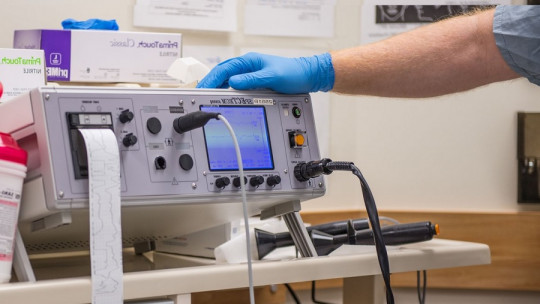Migraines are a relatively common problem among the population; It is estimated that around 12% of adults in Western countries suffer from it regularly, with the disorder being a little more common among women.
Furthermore, unfortunately, it is estimated that most people who have developed migraine take around 2 years to receive a diagnosis, which makes the situation more damaging to their quality of life.
Luckily, as more research has been done on this type of headache, Some effective therapeutic proposals have been discovered when it comes to managing migraine symptoms, and one of them is neurofeedback a form of intervention that we will talk about in this article.
What are migraines?
Migraine is a disorder characterized primarily by the onset of a headache of moderate or severe intensity , which affects approximately half of the head, and can last several hours. Along with this main symptom, others frequently arise such as nausea and dizziness, sensitivity to light, and a phenomenon known as aura, characterized by a disturbance of the senses, especially vision.
On the other hand, migraine manifests its symptoms in episodes that normally appear several weeks apart, and when they produce very acute pain, they are capable of leaving the person incapacitated for several hours.
However, migraine is a relatively benign disease, since it does not directly cause death, although it is true that it is associated with an increased risk of suffering from strokes. In any case, It is a problem harmful enough for many people to seek help from health professionals to treat this pathology, given that in addition to causing pain, it sometimes involves spending many hours in bed.
How is neurofeedback applied to the treatment of migraines?
The causes of migraines are complex, and are not fully known to science, in part because there is so much variation between people. However, it seems that there is a combination of biological and genetic factors, and others that are of environmental origin.
In any case, what is known is that in the situations that trigger migraine symptoms there are several phenomena that can be controlled voluntarily by the person who has developed this disorder. The problem is that usually, these people do not know that a certain process that is taking place in their body is part of the causes of their migraine episodes. Neurofeedback is a way to become aware of what these factors are and learn to control them.
Explained in more detail, neurofeedback is a therapeutic intervention procedure that consists of measuring a person’s brain electrical activity (by applying sensors on their head, without making any incision in the skin) and giving them that information in real time, so that Learn to regulate your nervous activation patterns.
It is a method that It is useful to help patients modulate their psychophysiological state according to their well-being goals and therefore, it has been shown to be effective in the treatment of several disorders, migraine being one of them.
In the case of migraine, neurofeedback trains the person to correct the amplitude of neuronal activation frequencies in certain parts of the brain cortex, which causes the symptoms to lose strength. Through this strategy, which takes place over several sessions, migraines appear much less frequently, and usually through weaker symptoms. It has also been seen that its effects are maintained over time once the cycle of neurofeedback sessions has ended.









